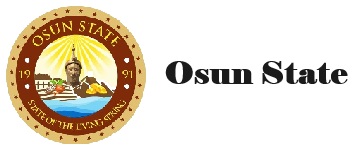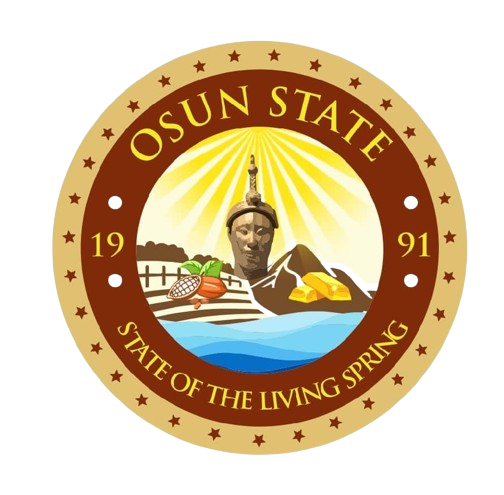Total
Area
People in
the town
Elevation
Ìlá Òràngún Osun
Ìlá Òràngún (or Ila) is an ancient city in Osun State, Nigeria, that was capital of an ancient city-state of the same name in the Igbomina area of Yorubaland in south-western Nigeria. Ìlá Òràngún is the more populous sister-city (and sister-kingdom) of Òkè-Ìlá Òràngún, located about 7.5 miles (12 km) to the north-east. The latitude and longitude coordinates of Ila Orangun are 8.019116 and 4.901962 respectively.[1] According to the information obtained from GeoNames geographical database, the population of Ila Orangun in Osun State, Nigeria is 179,192.
It is the headquarters of the Ila Local Government Area. In addition to Ila Orangun, the other towns and villages in Ila Local Government Area include Abalagemo, Aba Ododo, Ajaba, Alagbede, Ayetoro Obaaro, Edemosi, Ejigbo-Orangun, Gaa Fulani, Oyi Ayegunle and so on.
The people of Ila speak the distinctive dialect of the Yoruba language called Igbomina (or Igbonna). A common traditional profession of the indigenes of the town is palm-wine tapping. This profession is referenced in one of the most popular songs and common sayings about the town of Ila. The proverb Ila ‘o l’oogun, emu l’oogun Ila means “Ila has no special medicine or magical preparations other than palm-wine”. A folk song also says Ila ni mi, ise mi o le/ti mo ba wa l’orun ope bi ‘ofusia’ ni i ri, which translates into English as “I am a citizen of Ila, my profession is very easy; if I am on top of a palm tree, I feel like I am upstairs in a multi-storey building.”
Orangun Palace – Ila Eekun
Ila-Orangun is the home of the Oyo (now Osun) State College of Education. The African Heritage Research Library was established in 1988.

Ìlá Òràngún
The ancient town also has a Police Mobile Training School The name of present king (Oba) of Ila Orangun is Oba Abdul Wahab Olukayode Oyedotun Bibiire I. Amongst the prominent clergy men (Muslim) in the town are Alhaji Jamiu Keuyemi, Alhaji Imam Hammed Solahudeen.
Prominent Ila Orangun indigenes include Alhaji Adebisi Akande, Former Osun state Governor, Tafa Balogun, former IGP Nigeria,Group Captain Atolagbe Adediji Pioneer Nigerian Airforce spokesman,Aisha Olajide amongst others. Among the town’s prominent sons are chief Bisi Akande, former Governor of Osun State during the first tenure of chief Olusegun Obasanjo, Tafa Balogun, former Inspector General of the Nigerian Police Force, and many professionals in science, the arts, and academia.
There are more than 197 compounds in the ancient town.
LOCAL GOVERNMENT SYSTEM IN ILA ORANGUN
The 1886 Peace Treaty signed by prominent Yoruba traditional rulers effectively closed the 19th century revolutionary and fratricidal wars in Yoruba land. It also marked the dawn of British colonial rule in the Southern Protectorate.
The 1901 Native Council Ordinance of Sir Williams McGregor and the subsequent 1913 Edict gave birth to Ila Native Council in 1913, but the Ila Native Council effectively took off in 1933 during the regime of Sir Hugh Clifford. The Oba-inCouncil that administered Ila Orangun as a transmission belt between the community and the colonial masters was replaced with Oba- and-Council from 1933 till 1958.
A review of the existing Native Councils in the Western Region vide the 1952 Western Region Local Government Edict during the administration of Sir John Rankeen led to the establishment of Ila District Council in 1954 that comprised Ila Orangun, Oke Ila-
Orangun and Ora Igbomina with neighbouring villages and settlements.
The 1954 Local Government elections in the Western Region produced thirty-nine (39) elected Councilors in Ila District Council for a three (3) year term of office. The contest was mainly between the Action Group (AG) led by Chief Obafemi Awolowo and the National Council of Nigeria Citizens (NCNC) led by Dr Nnamdi Azikiwe.
The NCNC had the largest number of elected Councillors in Ila District Council, and consequently formed the Government with Hon S.O. Akerele as the Chairman. The Leader of Opposition was Prince (later Orangun) William Adetona Ayeni. Orangun Gbadamosi Adedapo, Agboluaje II became the President of the Council, though on advisory capacity without a voting right. The Council enjoyed All-Purpose District Council status with extensive functions.
The 1957 Local Government Reform provided for the Women Councilors and the appointment of Inspectors to the Councils from the Civil Service.
The Western State Government through the Interim Provisions Edict No 18 of 1972 which came into operation on 1st April, 1973 introduced a type of Council Managerial System in its area of jurisdiction. Consequently, parts of other District Councils, i.e Oyan, Asi and Asaba from Odo- Otin District Council and Otan Ayegbaju, Iresi and some adjourning villages from Ifelodun Central District Council, were merged with Ila District Council.
The Edict recognized a Management Committee as legislative body of the Council with at least twenty members. The membership of the committee was by appointment and was expected to meet only four times in a year, except when necessary.
The 1976 Local Government Reform by the Muritala/Obasanjo military administration however strengthened the Councils and restored some measures of democracy. Elected Councilors were put in place, though under non- political party basis. However, the Military Administrator of every state was empowered to select, as Councilor, a female of voting right in the composition. Mrs Ruth Adekunle was privileged to occupy the seat at Ila Local Government.
The 1976 Ila Local Government Area included the present Ifedayo and Boluwaduro Local Government Areas as well as Asi, Asaba and Oyan in Odo-Otin Local Government Area. But Asi, Asaba and Oyan were later removed from the list of towns in Ila Local Government Area.
However, in 1991, Ifedayo Local Government Area was created with Oke Ila-Orangun as headquarters. In a similar vein, in 1996, Boluwaduro Local Government Area, with Otan Ayegbaju as headquarters, was carved out of Ila Local Government Area when Local Government areas were constitutionally increased to 774 in the country. Ila Central Local Council Development Authority, Magbon, IlaOrangun was however created in 2017.
Political Wards in Ila Local Government
Private Institutions
There are eleven political wards in Ila Local Government Area now. They are:
1. Ejigbo I – Ward 1
2. Ejigbo II – Ward 2
3. Ejigbo III – Ward 3
4. Isedo I – Ward 4
5. Isedo II – Ward 5
6. Iperin – Ward 6
7. Eyindi – Ward 7
8. Oke-Ola and Oke-Aloyin – Ward 8
9. Oke Ede – Ward 9
10. Iperin / Eyindi – Ward 10
11. Less City (Ajaba/Edemosi and Ejigbo Orangun) – Ward 11
1. Five bank branches and cash offices (Skye Bank Plc, Mainstreet Bank Plc, First City Monument Bank Plc, Pathfinder Microfinance Bank Ltd and National Agricultural Credit Bank Ltd).
2. Several private primary and secondary schools.
3. Several private hospitals, clinics and maternity centres
4. Several private business concerns.
5. Voluntary Organizations like Man O’ war, Red Cross and Red Crescent.
6. Several hospitality concerns (Hotels and Guest Houses).
Public Institutions in Ila Local Government
List of Chairmen in Ila Local Government Area
1. Ila Local Government Secretariats
2. Osun Central Education District Office
3. Osun State High Court of Justice
4. Osun State Chief Magistrate Court
5. Osun State District Customary Court
6. Nigeria Police Mobile Force Training School
7. Osun State College of Education for:
(a) NCE Regular & Sandwich
Programmes
(b) Osun State University Sandwich
Degree Programme
(c) University of Uyo Regular Degree Programme.
(d) Ekiti State University Regular and Sandwich Degree Programmes
8. Federal University of Science and Technology, Ila Orangun
9. Zonal Command, Nigerian Drug Laws Enforcement Agency
10. Area Command and Divisions A & B,
Nigeria Police
11. Divisional Command, Nigeria Security and Civil Defense Corps
12. Unit Command, Federal Road Safety Corps
13. Divisional Command,State Security
Service
14. Federal Ministry of Agriculture and Natural Resources.
15. National Population Commission
16. Independent National Electoral Commission
17. National Youth Service Corps
18. Ministry of Finance.
19. State Hospital, a Comprehensive Health Centre and several Maternity and
Health Centres
20. Osun State Water Corporation
21. Ibadan Electricity Distribution Company
22. Nigeria Vigilante Service
Seven public secondary schools and nineteen (19) primary schools.
The underlisted functionaries, among others, stared the affairs of Ila Local Government Area:
1. Hon. S.O Akerele – 1955-1962
2. Hon. Lasisi Awoyemi – 1962-1966
3. Chief S.A Akinyemi – 1971-1975
4. Prince (Chief) Isaac A. Adebayo – 1977-1979
5. Prof. Babatunde A. Agiri – 1979-1983
6. Prince J.A. Oyinlola – Oct,1983- Dec, 1983
7. Hon. Prince Ademola Kolawole – Jan,1988-April, 1988
8. Dr. P.F. Olaolu – 1988-1989
9. Chief David A. Osundina – 1991-1993
10. Hon. Gani Adegoke – 1991-1993
11. Major Adebayo Adeniji (rtd) – 1994-1996
12. Hon. Akintola Titiloye – April,1996-Dec.,1996
13. Mr. J.O. Fatoki – Dec,1996-March, 1997
14. Hon. Sunday Kayode Adeniji – 1997-1998
15. Mrs. Bukola Opakunle – 1998-1999
16. Hon. Chief Adebiyi Adedotun – 1999-2002
17. Professor Tunde Ajiboye – June, 2002 – May, 2003
18. Engr. Prince Olusola A. Adejengbe – 2003-2007
19. Chief Sunday Kayode Adeniji – 2007-2008
20. Barr. Olusegun Durotolu – 10/1/2008 – 17/12-2010
21. Otunba Olusegun Awotunde – 2011-2017
22. Barr. Joshua Adediji – 2017 to date (ILG)
23. Chief Ademola Kolawole – 2017 to date (Ila Central LCDA)

